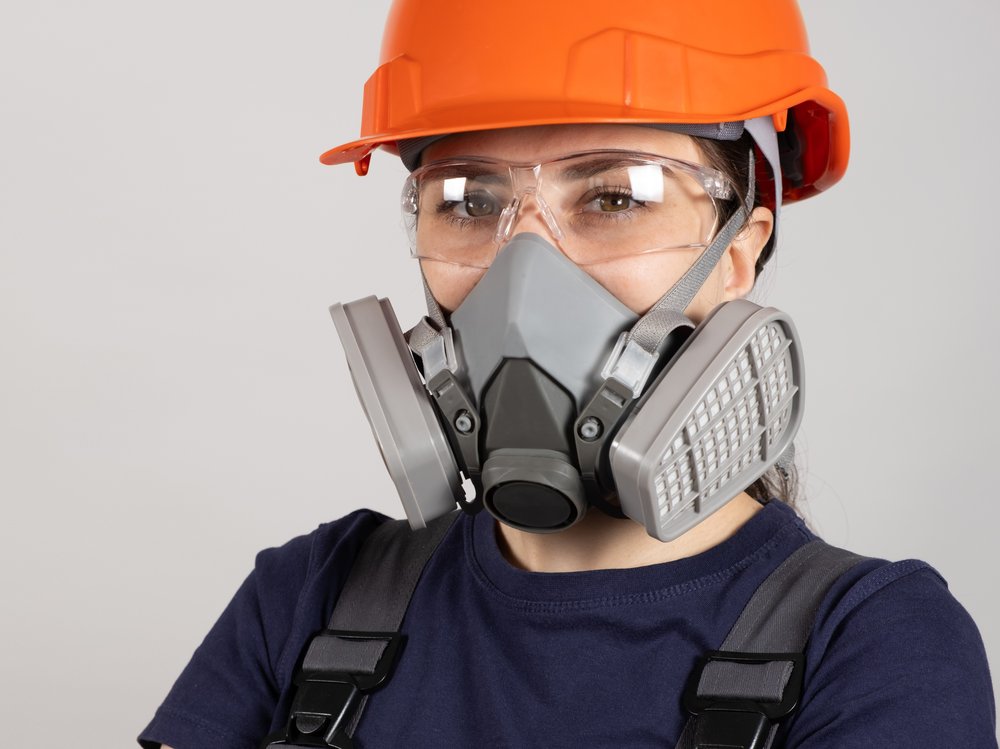
Respiratory Protective Equipment (RPE)
Hazardous airborne substances like dust and chemicals can be a significant risk on site. Respiratory protective equipment (RPE) is one way of preventing harm from these substances.
Overview
Respiratory Protective Equipment (RPE), like other types of personal protective equipment, should be considered a last resort.
Before using them, you should first try to eliminate or minimise the risk of exposure by undertaking a risk assessment justifying its use. If using RPE you’ll also need to remember to monitor the health of anyone who could be at risk to make sure it’s working effectively.
Questions to consider include:
- Could you use a safer substance?
- Could you enclose the task to prevent it from escaping into the air.
- Could you modify the process? E.g. suppress dust with water.
- Could you extract emissions/dust? E.g. local exhaust ventilation (LEV).
Providing workers with RPE is not a quick and easy fix – it can be costly to maintain and replace. Over time, engineering control measures such as local exhaust ventilation may be more cost-effective.
When to use RPE
There will be times when you do need to use RPE. For example:
- While you are arranging to install other control measures.
- For clearing up a spill.
- During temporary failure of a control measure e.g. sudden failure of LEV.
- For cleaning, e.g. low-pressure washing of a dusty shed.
- For short, one-off procedures.
Types of RPE
The three main types of respirators are:
- Respirators that use filters to remove contaminants
These come in two main types: a particulate respirator which filters out dust and gas respirators which filter out gas and vapours. - Powered air-purifying respirators (PAPRs)
Contaminated air is forced by a powered fan through filters to provide purified air. - Supplied air respirators
That supplies clean air from a source such as a cylinder or air compressor.
Choosing the right RPE
Selecting the right RPE can be confusing; you should get advice from occupational hygienists and suppliers of RPE to make sure you invest in the right protection.
If you are selecting RPE, consider these three things:
- Substance.
- Operator.
- Task.
Substance
- What is the type, nature and toxicity of the contaminant? Is it a mist, gas or solid?
- If the device doesn’t work correctly or fails.
- What is the worst that could happen?
- If there’s an accident, would it be a fire risk?
- What control measures does the Safety Data Sheet (SDS) for the substance you are working with recommend?
- Are you choosing the right type of RPE and filter for the hazard?
Operator
- Is it the right size and face fit? (Remember facial hair will affect the fit)
- Is it reasonably comfortable and compatible with other PPE that is being worn?
You should arrange for fit testing, which can often be done by the supplier. This is also a good chance to train your workers in the correct way to wear and use RPE.
Task
- Is it for regular use, short or long duration, confined space, ventilation, light or heavy work?
- What is the access and location of air and does the wearer need clear vision?
You’ll need to have a maintenance programme which includes cleaning, and checking for defects. Remember to store RPE properly - it’s best to use an airtight container.
The selection of RPE will usually require expert help. But as an example, general construction work, asbestos work, spraying, brushing/rolling, and welding/fabrication work will all require different types of respirators.
General construction work might include cutting, sawing, sanding, drilling, sweeping etc. This type of work could create silica dust, wood dust, and general nuisance dust.
A disposable respirator is usually suitable for most general construction tasks where exposures are low (less than 10 times the workplace exposure standard) and where it will only be used for short periods.
For general construction work where the work is more than 50 times the workplace exposure standard, then a full-face reusable respirator and filter will be required. Disposable respirators are not suitable for asbestos, spraying, brushing/rolling or welding or fabrication work.
Get an expert to help you determine your workplace exposure standards.